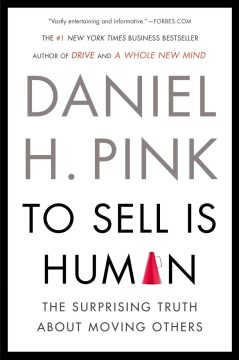1. Creating Value Through Selling
1.2 Reading: Pink “Rebirth of a Salesman”
This content from the first few chapters of “To Sell is Human”[1] complements Hubspot’s perspective on why the practice of professional selling is different than sales is generally perceived. Pink argues for why what he calls “non-sales selling” is a valuable skill for everyone. In Chapter 3, you will also be introduced to the concept of asymmetric information, a foundation of information economics that is very relevant for successful marketing and sales.
 |
|
Comprehension Questions
- What is “non-sales selling”? Why does Pink argue that this a skill that is increasingly important for professional success?
- What were the key findings from Pink’s “what you do at work” survey? How do they support his argument?
- What does Pink mean by “elasticity”? How does he use it to support his argument?
- Can you explain Ackerlof’s theory of market failure under asymmetric information (or the “lemons problem”). How might you use this theory to explain why people have historically negative perceptions of salespeople?
Application Questions[2]
- What common themes do you see in the Hubspot video and the Pink reading?
- Do you agree with Pink’s argument that non-sales selling is important to professional success? Why or why not?
- How did the internet change the information asymmetry problem (and thus require salespeople to change?)
- Do you agree with Pink’s argument that the current common view of selling is out of date? Why or why not?
- I encourage you to read the Introduction and Part One in full (p. 1-62). Previous students have found the stories Pink uses to illustrate his arguments to be valuable for their learning. However for the sake of time and clarity, the sections listed are the only ones required for this course. ↵
- Application Questions apply and integrate concepts covered in the comprehension questions. They will be starting points for individual or group exercises in live workshops. The best answers will be the combined result of your individual and workshop learning. The more we build on these questions in workshops and team assignments, the more likely they will be the topic of an applied multiple choice or short-answer question on an exam. ↵